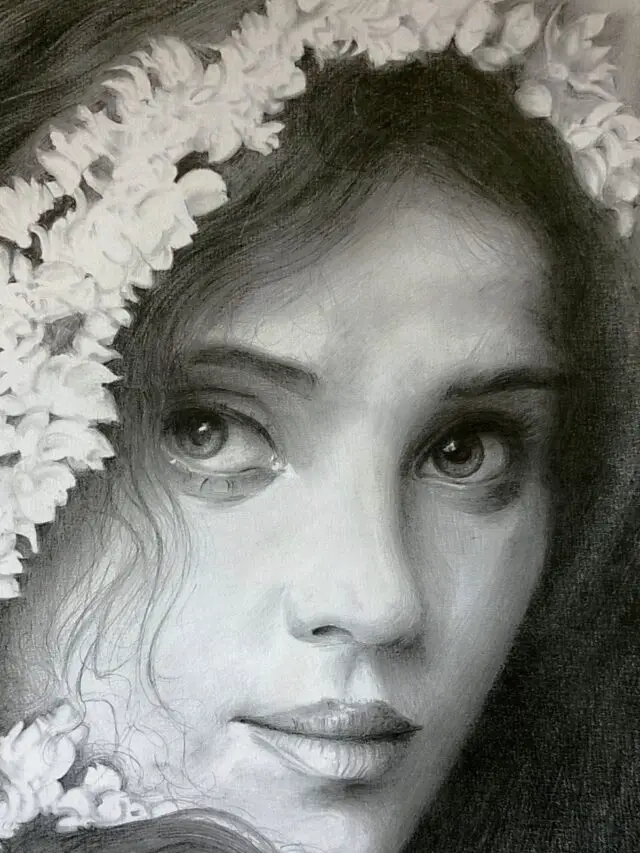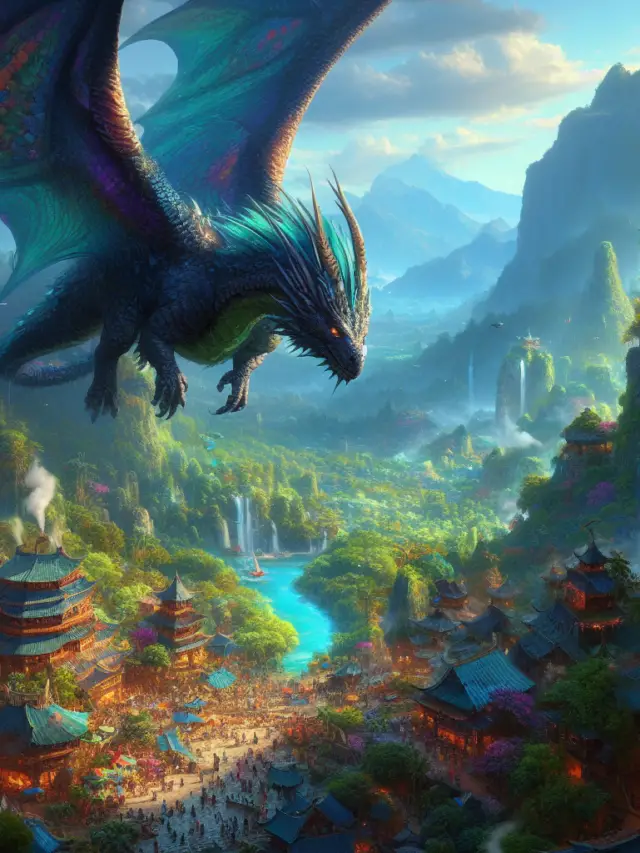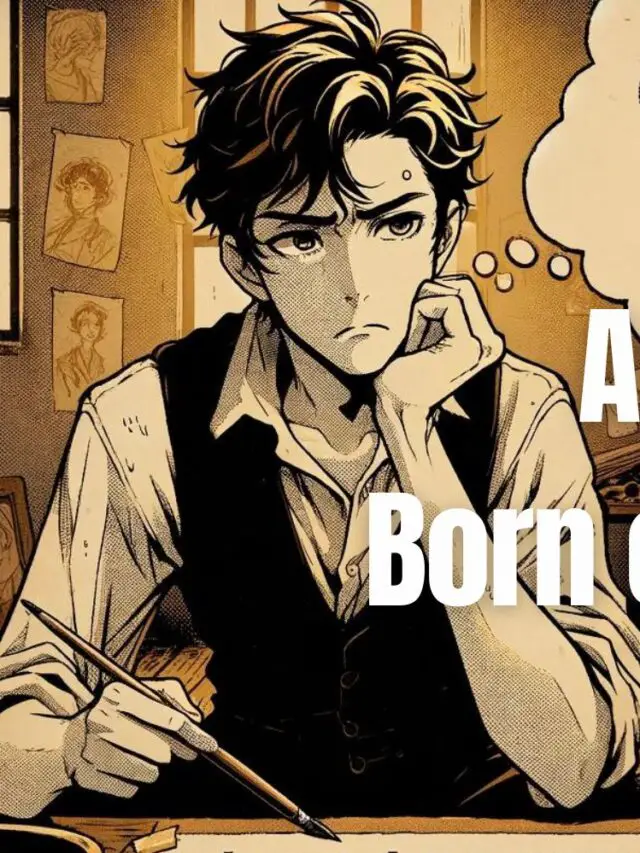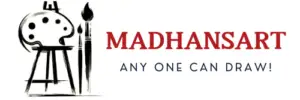Texture is an essential aspect of art that is often overlooked. The reason may be that it is difficult to define a texture. In the basic sense, the texture is how an object feels to the touch.
However, when it comes to artwork, there are various ways to create and use texture. This blog post will explore the different types of traditional and straightforward textures and why artists use them in their artwork.
Table of Contents
What are the Two Types of Texture in Art?
Textures can be broadly divided into two categories: tactile and visual.
Tactile textures can be felt with the hands, while visual textures are those the eye can see but not necessarily feel.
Sometimes, an artist can combine tactile and visual textures in a single work of art.
What is Tactile Texture in Art?
In art, tactile texture refers to the physical feel of a surface on an artwork. Artists utilize this element to create an illusion of depth and volume and evoke emotions in their viewers through touch. Artists may also use tactile texture to add visual interest, create a certain mood or atmosphere, or give the viewer a more immersive experience.
Examples of how you can use tactile texture in art include:
- Use different brushstrokes to create texture
- Apply paint thickly (impasto) to create texture
- Carve or emboss a design into the surface of the artwork
- Use found objects or other materials to create texture.
Artists may use tactile texture to add visual interest, create a certain mood or atmosphere, or give the viewer a more immersive experience.
An example is Vincent van Gogh’s Starry Night, which has thick, textured brushstrokes and is filled with tactile texture.
What is Visual Texture in Art?
Visual texture in art refers to the perception of surface quality within an artwork. Artists employ it to evoke the illusion of tactile sensations through varied brushwork, patterning, or other techniques.
The bumpy, smooth, or rough surface you can see and feel adds interest, creates contrast, and represents different materials.
It is different from implied texture, an illusion of texture created using other elements of art.
It is an essential tool for artists and can be achieved in many ways.
Examples of how to create visual texture in art include:
- Carving into the surface of the artwork
- Adding gesso or other textured mediums to the surface
- Using a variety of brushstrokes to create texture
- Applying paint thickly (impasto) to create texture
- Adding natural objects or other materials to the surface.
Some famous examples of paintings with interesting visual textures include Jackson Pollock’s “Number 1” and Rembrandt’s “The Storm on the Sea of Galilee.”
What are the Different Types of Texture in Art?
Besides the Broad two textures mentioned above, many other texture types are used in art.
What is Actual Texture in Art?
Touch can be an essential factor in how our brains process a work of art, as we are wired to respond to tactile stimuli. When we think of texture in art, we usually think of visual texture, the physical bumps, and patterns we see on a painting or sculpture. However, actual texture refers to how a work of art feels when touched.
Some of the ways that an artist can create actual texture include:
- Incorporating raised elements such as braille or embossing
- Creating artwork from soft materials such as fabric or yarn
- Making sculptures with rough or prickly surfaces
- Adding bumps or ridges to a painting or drawing
- Including textured paper or other materials in coll
You should check this famous example of a painting with actual texture: The Scream by Edvard Munch, which includes raised background elements that add texture to the painting.
What is Implied Texture in Art?
Implied texture in art is where an artist creates an illusion of a different texture using elements of art like shape, pattern, lines, color, shades, etc. It can represent different textures and surfaces without actually creating them. It is also common in Op Art, where artists use optical illusions to create the illusion of texture.
Similarly, an artist could use different colors to give the illusion of different textures, such as fur, skin, etc.
Examples of how to create implied texture in art include:
- Use pattern and repetition to create the illusion of a textured surface
- Use wavy lines to create the illusion of water
- Use different colors to give the impression of different materials, such as metal or stone
- Use light and shadow (value) to create the illusion of a textured surface
One of the most famous examples of implied texture is The Madonna and Child with Saint John the Baptist by Leonardo da Vinci. Leonardo uses light and dark colors in this painting to create an implied texture of folds in the Virgin Mary’s dress.
Implied texture is often used in more realistic or representational artwork as it can help add realism and depth.
What is Simulated Texture in Art?
A Simulated texture is a type of texture that gives the illusion of being real. It is often used in art to create depth and interest. While you can feel natural textures with your hand, simulated textures can only be seen.
Common examples of simulated surface texture include brushstrokes, patterns, and lines.
Simulated textures are essential because they can add realism and depth to an artwork. When used correctly, they can make a painting look more 3-dimensional. They can also create a visual sense of movement or energy.
Some of the ways you can use simulated textures in the art include:
- Use a variety of brushstrokes, smudging paint, and creating patterns to create the illusion of movement
- Layer different colors of pigment to create depth and dimension
- Create patterns with stamps or stencils
- Use smudging and other blending techniques to create exciting effects.
Some famous examples of paintings with simulated texture include Claude Monet’s “Water Lilies.” In “Water Lilies,” Monet used different colors and layers of paint to create the illusion of water rippling in a pond. In “Starry Night,” van Gogh used a variety of brushstrokes to create the illusion of stars twinkling in the night sky.
What is Subversive Texture in Art?
Subversive texture in art is a term that refers to the use of techniques and materials that challenge the traditional notion of what art should look and feel like.
By incorporating unexpected elements into their work, artists can create a sense of tension and provoke an emotional response in viewers. Sometimes, an artist can use subversive texture to convey a message or highlight a particular issue.
Some examples of how subversive texture can be created include:
- Rough or jagged textures that are applied to canvas or paper using a variety of mediums such as charcoal, pencil, or paint
- Sharp objects such as barbed wire, nails, or broken glass are incorporated into sculptures or installations.
- Unexpected materials such as human hair, animal fur, or food are used in artworks.
- Work is created using unconventional burning, tearing, or crumpling.
Famous examples of artworks that incorporate subversive textures include “Pietà” by Michelangelo and “Fur-lined Teacup, Saucer and Spoon” by Damien Hirst.
In “Pietà,” Michelangelo used various chiseling techniques to create a sense of movement in the stone. In “Fur-lined Teacup, Saucer and Spoon,” Damien Hirst uses animal fur to make sense of luxury and wealth.
What is Color Texture in Art?
Color texture in art is how colors create the illusion of different textures. It can be achieved using different colors, shades, and tones to create an illusion of depth and dimension.
Like physical texture, color texture can add interest and depth to a painting and create different effects. For example, a smooth, glossy surface can develop a sense of sophistication, while a rough, matte surface can convey a more rustic vibe.
Examples of how you can use color textures in the art include:
- Use light and dark colors to create the illusion of an uneven surface.
- Use different colors to give the illusion of different materials, such as fur or skin.
- Different mediums of color can create different textures, e.g., watercolor and oil colors can create other effects.
- Using a light airbrush to add delicate color accents
- Adding dimension to a painting using thicker colors builds texture in certain areas.
Some famous examples of paintings with interesting color textures include Vincent van Gogh’s “Starry Night” and Pablo Picasso’s “Les Demoiselles d’Avignon.” In “Starry Night,” van Gogh uses deep blues and greens to create a feeling of depth and movement. In contrast, in “Les Demoiselles d’Avignon,” Picasso uses bright oranges and yellows to create a sense of tension and unease.
What is Natural Texture in Art?
Natural texture in art refers to the surface qualities of a work derived from the materials used.
It can include the grain of the wood, the smoothness of the stone, the ridges of bark, or any other tactile quality inherent in the medium. The natural texture may be enhanced or exaggerated through carving, grinding, or polishing techniques.
It can also promote a sense of tactility, inviting viewers to reach out and touch the work. Natural texture can skillfully add depth and richness to a piece, making it more engaging and visually intriguing.
What is Artificial Texture in Art?
Artificial texture in art refers to the surface qualities of an artwork created by the artist rather than inherent in the materials used.
An Artist can achieve artificial Textures through various means, such as painting, drawing, printmaking, sculpture, or mixed media. Artificial texture can add visual interest and depth to a piece, making it more engaging and visually appealing.
An artist uses artificial texture to control the viewer’s work experience, often to create a desired effect or mood.
What is Abstract Texture in Art?
Abstract texture in art can best be described as using visual texture to create an abstract work of art.
This type of texture does not represent anything recognizable in the physical world but uses shapes, colors, and lines to create a unique visual experience. While traditional artists may use actual textures such as sand or fabric to create them, abstract artists often use digital or painting techniques to achieve the same effect.
The goal of any artwork, regardless of the technique employed, is to produce a visually appealing and moving creation that elicits an emotional response in the audience.
What is Optical Texture in Art?
The optical texture is visual and gives the illusion of depth or three-dimensionality. It is created when an artist uses patterns, colors, or light and dark values to trick the eye into seeing texture where there is none.
For example, a work of art might have ripples that appear to be raised off the surface. Those ripples are just an optical illusion created by the artist’s use of color and light.
Optical texture can create a wide range of effects in art. Whether it’s used to add depth and dimensionality or to create an illusion of movement, this type of texture provides artists with a powerful tool for creating visually arresting works of art.
What are the Different Terms Used to Categorize Textures in Art?
In addition to the broad texture category above, we have other specific terms to describe different types of textures in art.
| SNo. | Texture Terms | Visual Properties | Emotional Properties |
|---|---|---|---|
| 1 | Smooth Texture | Low Level of Contrast | Creates Calm and Serene Feeling |
| 2 | Rough Texture | High Level of Contrast | Creates Aggressive or Dramatic Feeling |
| 3 | Soft Texture | Low level of Details | Creates Gentle or Inviting Feeling |
| 4 | Hard Texture | High level of Details | Creates Dramatic or Powerful Feeling |
| 5 | Shiny Texture | Reflects light | Creates Luxurious or Glamorous Feelings |
| 6 | Dull Texture | Reflects light | Creates More Somber or Serious Feelings |
| 7 | Transparent Texture | Low level of light | Creates Ethereal or Otherworldly feelings in artwork |
| 8 | Opaque Texture | The surface has raised areas that are lower than the surrounding area. | The surface does not allow light to pass through it. |
| 9 | Wrinkled Texture | The surface has a series of lines or creases. | Creates Substantial or Solid feeling in an artwork |
| 10 | Embossed Texture | Surface has raised areas that are lower than the surrounding area. | Creates Distressed or Weathered feelings in an artwork. |
Smooth Texture
A smooth texture is created when the surface has a low contrast level and looks flat. The smooth texture often creates a calming or serene feeling in an artwork. These textures are generally associated with minimalist or abstract art but can be seen in any painting.
Rough Texture
A rough texture is created when the physical surface is highly contrasted. This type of texture is often used to create a more aggressive or dramatic feeling in an artwork. Generally, artists use a variety of mediums to create rough textures with high density and bumpy surfaces.
Soft Texture
A soft texture is created when the surface has a low level of detail. This texture often creates an artwork’s gentle or inviting feeling. An artist generally uses watercolor, gouache, or pastel to get a soft texture in his painting and will avoid sharp or crisp edges.
Hard Texture
A hard texture is created when the surface has a high level of detail. This texture often creates a more dramatic or powerful feeling in an artwork. Hard textures are created by densely packed objects or pronounced contrasts between light and dark areas.
Shiny Texture
A shiny texture is created when the surface reflects a high light level. This texture often creates a luxurious or glamorous feeling in an artwork. The artist uses shiny texture to add contrast to an otherwise bland composition.
Dull Texture
A dull texture is created when the surface reflects a low light level. This texture often creates a more somber feeling in an artwork. Dull textures comprise small, evenly-spaced elements that lack contrast and variety, resulting in a monotonous appearance. They are often used in minimalist or abstract artwork.
Transparent Texture
A transparent texture is created when light passes through the surface. This type of texture is often used to create an ethereal or otherworldly feeling in an artwork. Transparent textures can add visual interest and depth to your artwork. They can create an illusion of movement or suggest hidden layers beneath their surface.
Opaque Texture
An opaque texture is created when the surface does not allow light to pass through it. This texture often creates a more solid feeling in an artwork. It can create the illusion of sense, movement, and depth. The artist uses densely packed arrangements of contrasting colors in his painting.
Wrinkled Texture
A wrinkled texture is created when the surface has a series of lines or creases. This texture often creates a more distressed or weathered feeling in an artwork. In addition, the wrinkled texture is often used to develop a sense of depth or dimensionality. This texture looks like pressure is applied on a flat surface resulting in a surface disturbance.
Embossed Texture
An embossed texture is created when the surface has raised areas lower than the surrounding area. This type of texture is often used to create a more formal or sophisticated feeling in an artwork. It can also create contrast by standing against a smooth background or providing textural interest within a more detailed design.
Conclusion
Texture is essential for artists because it can create different moods and effects. In this article, we’ve explored the different types of textures artists use to achieve these effects. We trust you’ve found this blog post helpful and will experiment with some of these textures in your artwork. If you need help getting started, check our Elements of Art Texture and Texture Guide for more tips and tutorials.
Frequently Asked Questions
-
What is Haptic Texture?
The haptic texture is the sensation of a material when touched, be it paper, silk, or velvet in physical life. In art, however, haptic textures use visual cues like coloration, line, and shape to convey an impression of depth on canvas and generate a perception of tangible movement.
-
What are the Main Textures in Art?
An artist can create a multitude of appearances with four undeniable textures in art: smooth, rough, glossy, and matte. Smoothness is achieved by applying broad brush strokes to craft an even canvas while using thick applications gives the artwork a rugged texture. Lustrous surfaces add luminosity and dimension, while matte finishings offer an airy aesthetic appeal overall.
-
How Many Textures Are There in Art?
Artistic textures can vary from soft and silky to ruggedly tactile. Colors, lines, shapes, and patterns are all used together in the art to create the desired textured effect. Experienced artists often explore different methods of applying these elements to their work for an optimal finish on their canvas.
-
What is Natural Texture in Art?
Art comes alive when artists incorporate natural textures into their work. Natural texture provides an organic element that truly enriches any artwork used. Using natural materials like wood, stone, or fabric to create sculptures and paintings adds depth to a piece that cannot be achieved without using paints or other synthetic substitutes alone.
-
What is Abstract Texture in Art?
Abstract texture in art is an innovative method to evoke emotion, utilizing brush strokes, patterns, and colors. Using abstract texture allows artists to communicate the true beauty of their artwork without relying on ordinary forms or shapes. By mixing different textures, they create one-of-a-kind works of art that speak louder than words ever could.
-
What is Visual Texture in Art?
Visual texture in art is a unique way of stimulating the viewer’s senses, allowing them to feel like they are part of the painting. Through manipulating light, color, shapes, and lines with skillful precision, artists can create an illusionary experience that captures their audience’s attention. Visual texture serves multiple purposes, adding interest and dimension while furthering appeal.



